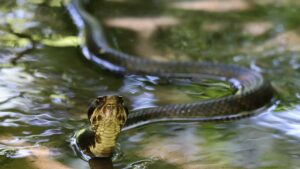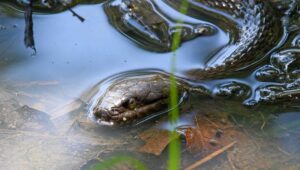The mysterious and often misunderstood world of snakes has sparked countless questions and concerns among curious minds. One intriguing query that surfaces is, “Can a snake bite you underwater?” The prospect of encountering a snake while submerged adds an extra layer of uncertainty and fear.
Yes, snakes are capable of biting underwater. While their land-based movements may appear slow and deliberate, snakes are surprisingly adept swimmers, and many species are well-equipped to navigate aquatic environments. The ability to bite underwater is attributed to their specialized anatomy and hunting techniques.
However, in this article, we delve into the depths of this enigma to uncover the truth behind whether or not a snake can indeed strike underwater. Join us as we navigate the realms of snake behavior, anatomy, and survival instincts to shed light on the captivating question: Can a snake bite you underwater?
Can Snakes Swim?

Yes, many snakes are proficient swimmers. While not all snake species are adapted for aquatic life, several are known to swim and are even capable of moving through water with ease.
Some snakes, such as water snakes and sea snakes, are specifically adapted for aquatic habitats and are excellent swimmers. They use a combination of lateral undulation and serpentine movements to navigate through the water.
Even non-aquatic snake species can swim when necessary. For example, some terrestrial snakes may swim across bodies of water to find new habitats or escape predators. Snakes are generally quite versatile in their movements and can adapt to different environments, including water.
Can a Snake Bite You Underwater?
Yes, snakes are capable of biting underwater. While many snake species are adept swimmers, their ability to bite in water largely depends on the species and the circumstances.
Some snakes are more comfortable in aquatic environments and have adaptations for hunting and navigating in the water. If you encounter a snake in the water, it’s essential to exercise caution.
Snakes can strike and bite underwater using their fangs and venomous snakes may inject venom during a bite. Therefore, it’s important to be aware of your surroundings, especially in regions where venomous snakes are present.
If you are in an area with potentially dangerous snakes, take precautions when swimming or wading in bodies of water. Be vigilant and avoid reaching into areas where you cannot see or where a snake may be hiding. Additionally, understanding the local snake species and their behavior can help you minimize the risk of snake encounters



